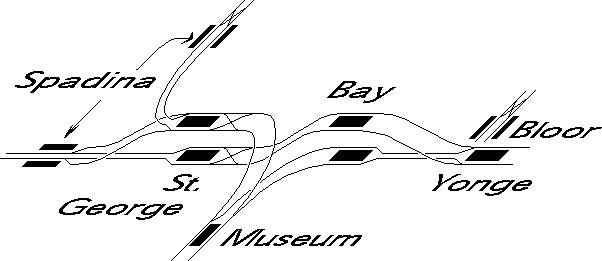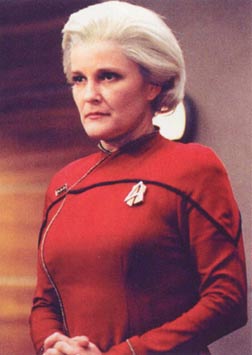kkgg7
Banned
Current design of Toronto's subway line works pretty well in terms of integrating with the buses and streetcars. However, I have a question about the the west part of the YUS line. Essentially, why does the subway have to be on University Ave in downtown area? Considering University Ave 550 meters from Yonge St, a mere 5-6 minutes work, doesn't it make more sense to have the subway run on something a bit further way, such as Spadina Ave.
Spadina is 800 meters from University, still a less than 10 minutes walk, but only 650 meters from Bathurst (the west boundary "downtown"). I would think if the western branch runs on Spadina, more people will have direct access to it within 10 minutes of walking (from Palmerston/Tecomseth to Sherbourne, which most people can accept without transferring). People working on University Ave can easily take the Yonge line and walk for 5 minutes to work (many have PATH access), and on the other hand, Spadina and Bathurst will both have subway access, and the "downtown" core can be easily expanded.
I know it was meant to provide easy commute for financial district, but I just don't see the point of two parallel lines being 550 meters apart. I know many working on east side of University (MARS for example) simply get off the Yonge line (College St) and walk to office, instead of wasting 10 more minutes to make a U-turn.
Spadina is 800 meters from University, still a less than 10 minutes walk, but only 650 meters from Bathurst (the west boundary "downtown"). I would think if the western branch runs on Spadina, more people will have direct access to it within 10 minutes of walking (from Palmerston/Tecomseth to Sherbourne, which most people can accept without transferring). People working on University Ave can easily take the Yonge line and walk for 5 minutes to work (many have PATH access), and on the other hand, Spadina and Bathurst will both have subway access, and the "downtown" core can be easily expanded.
I know it was meant to provide easy commute for financial district, but I just don't see the point of two parallel lines being 550 meters apart. I know many working on east side of University (MARS for example) simply get off the Yonge line (College St) and walk to office, instead of wasting 10 more minutes to make a U-turn.
Last edited:








